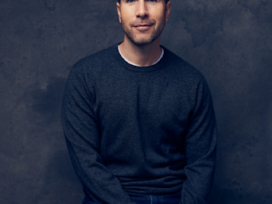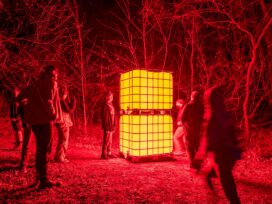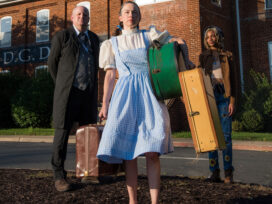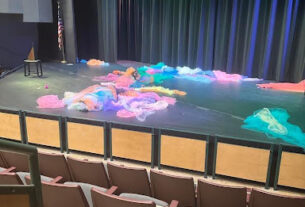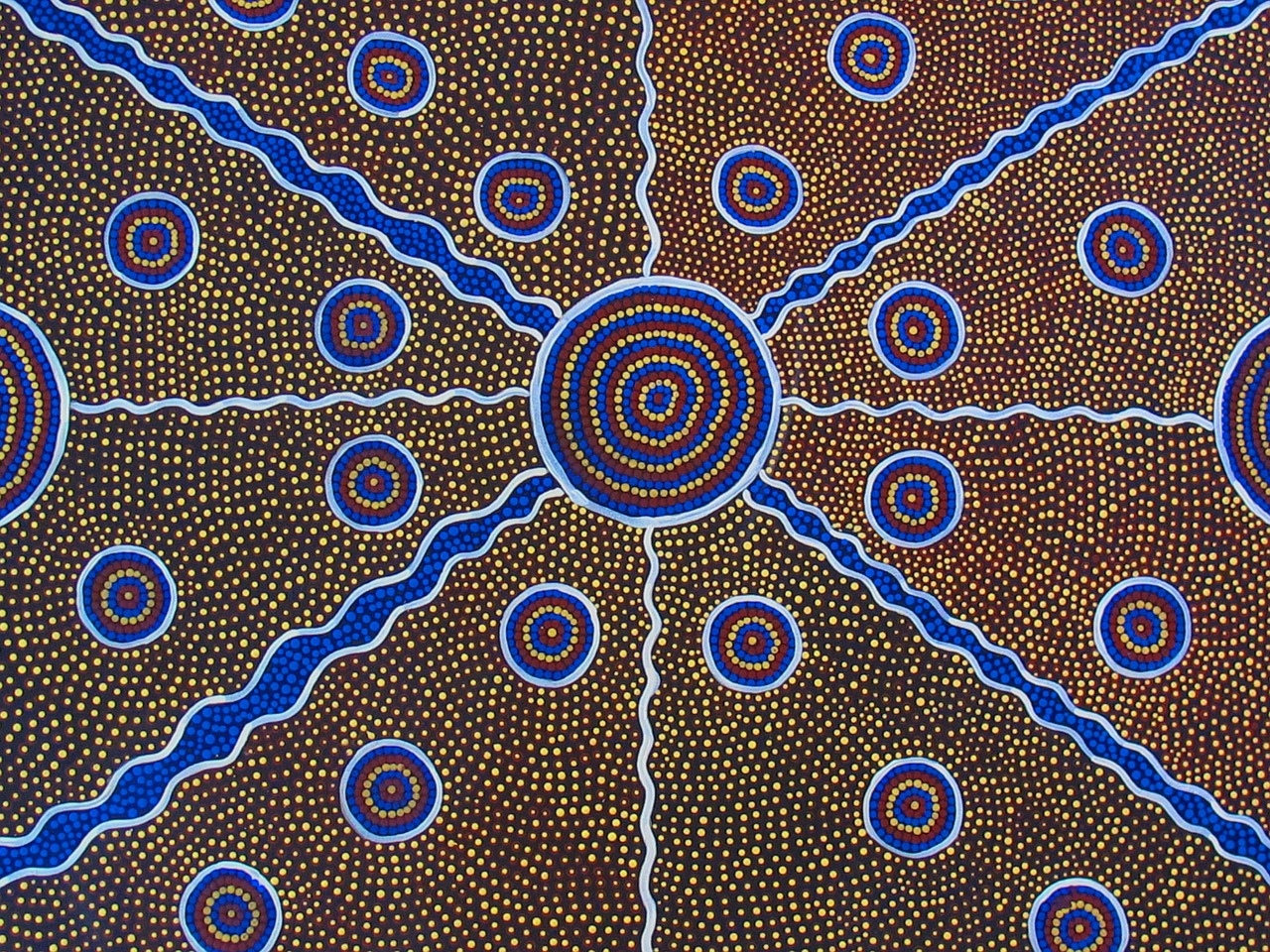
Kluge-Ruhe Aboriginal Art Collection
If you wish to experience foreign art in a local building, visit the Kluge-Ruhe Aboriginal Art collection. There, you can get a look at art that was first introduced thousands of years ago.
Aboriginal art is an ancient style first practiced by indigenous Australians. Using tree bark and stone as canvases, the Aboriginal Australians would use crushed clay, ochre, and other minerals as their source of pigment. This gave their paintings an overall earthen color.
Often times, the painting served to tell stories, sometimes being conveyed through simple circles and lines.
My experience visiting the museum was enjoyable, and the paintings and exhibits were interesting to view. One display was a pair of log coffins displayed in the middle of the room.
Apparently, whenever someone passed away, their bodies were laid to decay on platforms while their family members went about building and painting the coffin. Once the body was properly decomposed, the remains were placed in the coffin, which was set upright to mark the final resting place of the deceased. The coffin and grave marker were one and the same.
The display rooms were small, and I was told by the receptionist that only 1 percent of the collection was on display at the time, with the rest to be eventually cycled out.
In spite of this, what few exhibits on display were interesting, and viewing them felt like Australia. I highly recommend this exhibit to anyone with an interest in foreign art. In addition to the fascinating paintings and exhibits, the staff is also quite friendly.
“Indigenous Australians have been painting for 70-80,000 years,” said receptionist Nicole Wade, “And their painting at that time, on the body and on the landscape, isn’t permanent. Since the 1970’s onward, we are able to collect works that are portable and permanent in an effort to continue telling those stories and traditions.”


